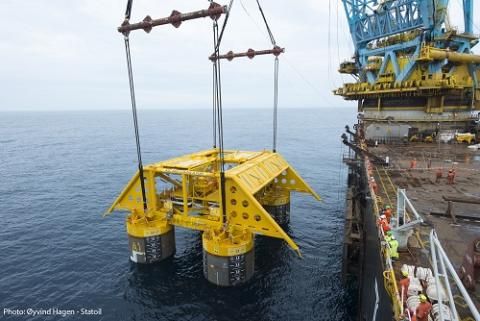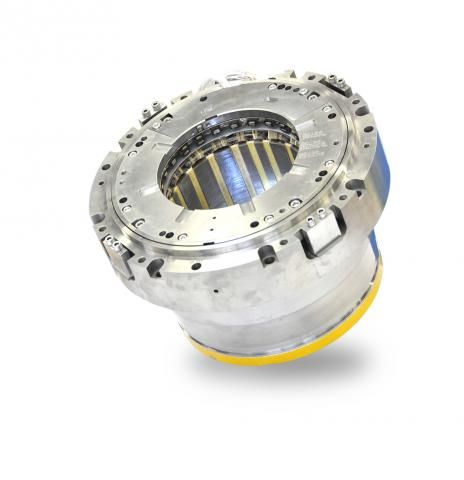SKF magnetic bearings to equip subsea compression system off Norwegian coast


(The magnetic bearings are integrated inside the compressor casing, preventing gas leakage)
SKF has supplied magnetic bearings for use in the subsea gas compression system at the Åsgard gas field off the Norwegian coast. As part of the subsea gas compression system, the bearings are expected to contribute to recovering additional gas volumes from depleting gas fields and are likely to extend the lifetime of those gas fields.
Traditionally, gas compression is made on platforms. For Åsgard, Statoil and its partners made the decision to locate it on the seabed, near the wellheads, to maximize gas recovery and therefore prolong significantly the production life time.
SKF’s magnetic bearing technology is said to have helped achieve this autonomous deep water subsea gas compression system. The bearing simplifies the system architecture by removing the need for components such as lubricating oil, seals and gearbox. The magnetic bearings are integrated inside the compressor casing, preventing gas leakage and allowing a smaller environmental footprint. They are frictionless, enabling higher rotation speeds, leading to smaller compressor modules and ultimately lighter processing plant infrastructure.
Jérémy Lepelley, SKF Magnetic Mechatronics (S2M) Subsea Manager said, “Compressing gas on a subsea installation is a significant step forward for the oil and gas sector. SKF magnetic bearings enable the gas compression system to be completely oil-free, exceptionally reliable.”
SKF was awarded the contract in May 2011 by MAN Diesel & Turbo, the OEM of the 11,5 MW electric-motor-driven centrifugal compressor running on SKF’s magnetic bearings. The mechanical modules were assembled in the compressor frames in 2013, following the validation of the technology by Statoil, and the two units have since then undergone “burn-in” time, accumulating more than 2000 hours each, prior to installation.
SKF has also provided a control system which enables remote operation of the magnetic bearing system, and facilitates the efficient use of the bearings. Tested and qualified in wet gas conditions similar to those found in the North Sea, the bearings are said to deliver the same performance in subsea applications as they do in theory. The control system has been tailored for use in harsh marine environments, through a special redundancy design in which components are assembled in an enclosure that can withstand subsea conditions.